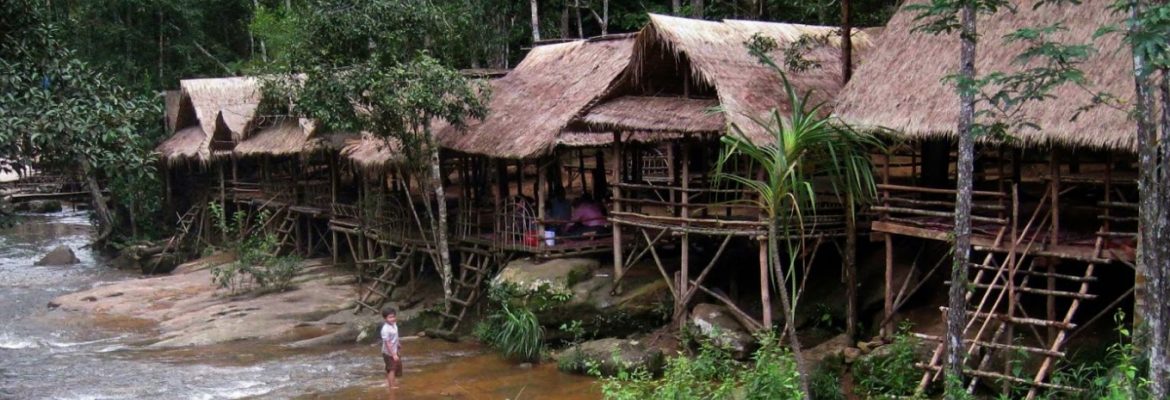Phnum Bokor National Park, Cambodia
This national park officially called Preah Monivong National Park – comprises 1581 sq km of protected land, most of it primary forest, that’s particularly rich in endemic flora and provides a home to globally endangered fauna such as the tiger (recently photographed with camera traps), chestnut-headed partridge and green peafowl. In addition to the rainforest itself, with its unceasing insect and bird calls, the park’s main attractions are Popokvil Falls and the abandoned French hill station of Bokor.
Bokor’s moist evergreen forests – with dry dipterocarp and mixed deciduous forests in the north – shelter a wide variety of rare and threatened animals, including the Indian elephant, leopard, Asiatic black bear, Malayan sun bear, pileated gibbon, pig-tailed macaque, slow loris, red muntjac deer, lesser mouse deer, pangolin, yellow-throated martin, small Asian mongoose and various species of civet, porcupine, squirrel and bat. Over 300 species of bird, including several types of hornbill, also live here. Don’t expect to see much wildlife, though – most of the animals are nocturnal and survive by staying in more remote parts of the park.
Long kept off the tourist map due to Khmer Rouge activity, Bokor National Park is still threatened by poaching and illegal logging, especially in the north, as well as by squatters, development and, in the southeast, the Kamchay hydropower project. In the 1990s there was talk of making the park a World Heritage site but, sadly, the government’s inability to protect the site put an end to the initiative.
On the frontline of the never-ending battle to protect Bokor is a group of dedicated foresters and enforcement rangers, paid in part by admission fees and assisted by expertise and funding from the Wildlife Alliance, an NGO based in San Francisco. At the park entrance, an informative (if low-budget) visitors centre has text and charts about Bokor’s rare animals and the challenges of protecting the area’s ecosystems.
Plans are underway to re-establish some sort of a luxury resort atop Phnom Bokor. Whether this huge project – being carried out by the well-connected fellow who owns all those Sokimex petrol stations and holds the entry-fee concession at Angkor – will contribute to preserving the national park or endanger its rainforest ecosystem remains to be seen. Conservationists are hoping that judicious tourism development, especially ecotourism, can provide income both for local communities and for the enlightened management of the park. The national park, including the hill station, are believed to be free of land mines, but as always in Cambodia, do the sensible thing and stick to well-worn paths. The main attraction in Bokor National Park is the old French hill station at 1,080m which can be visited as a day trip from Kampot or Sihanoukville.


